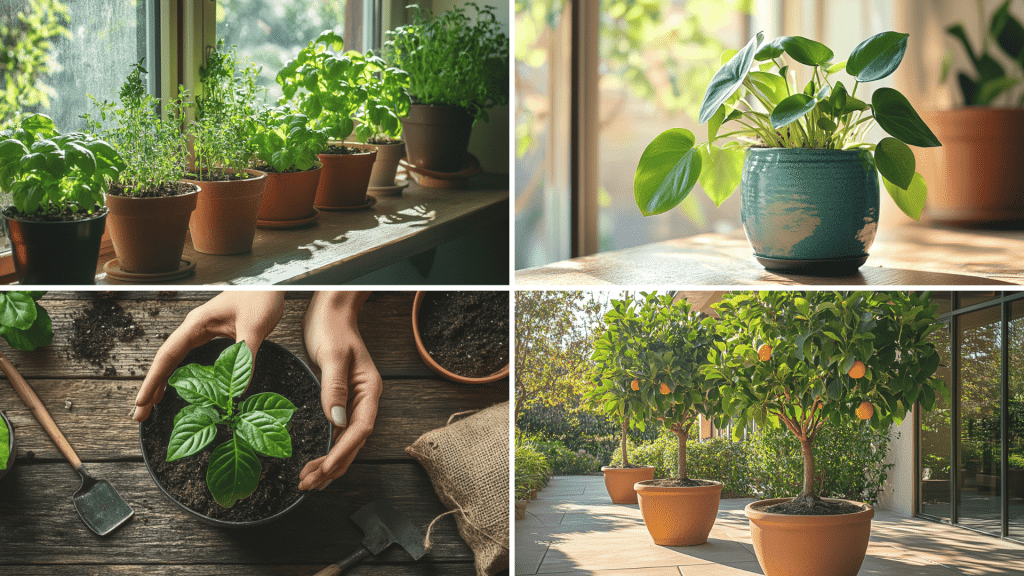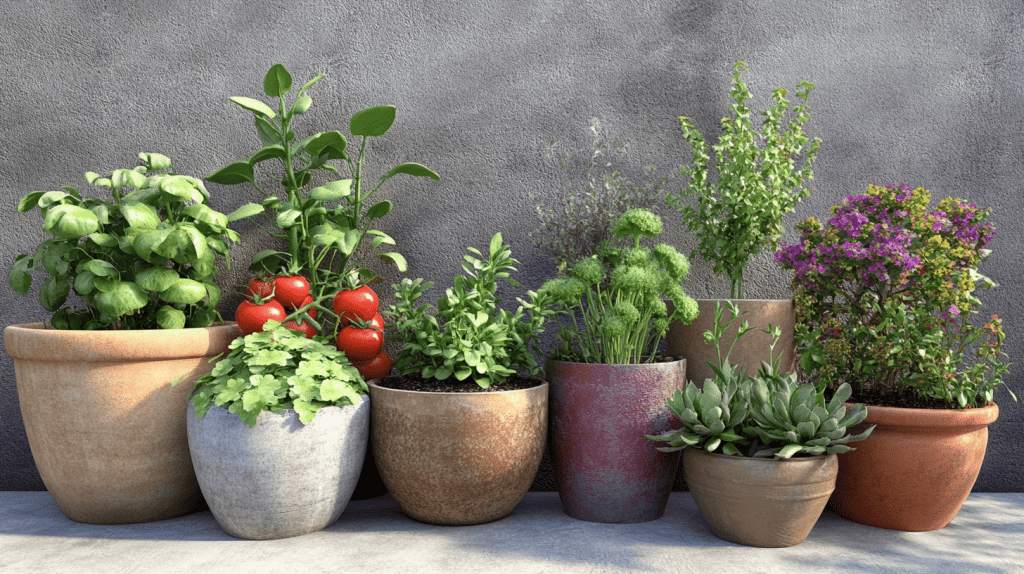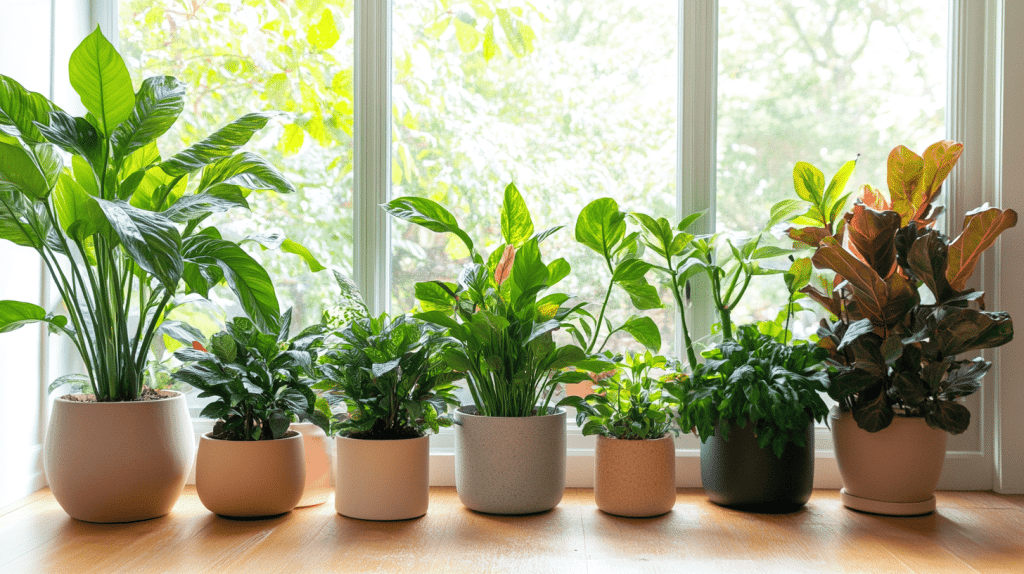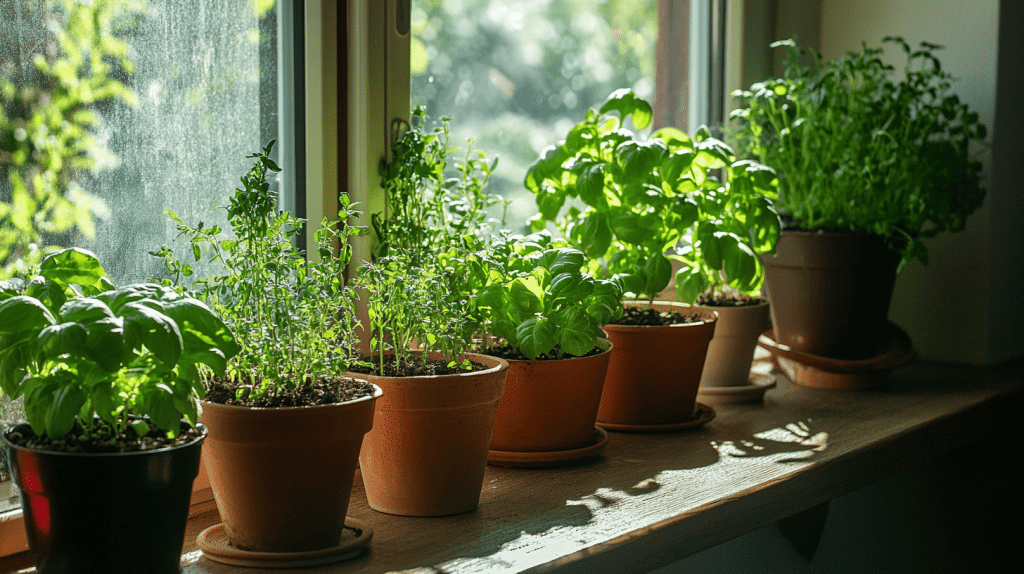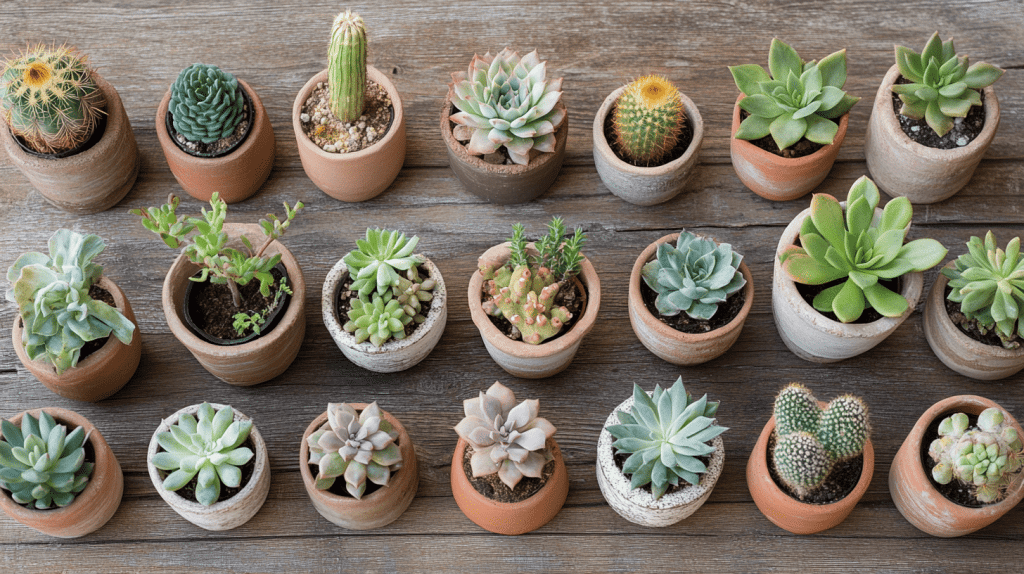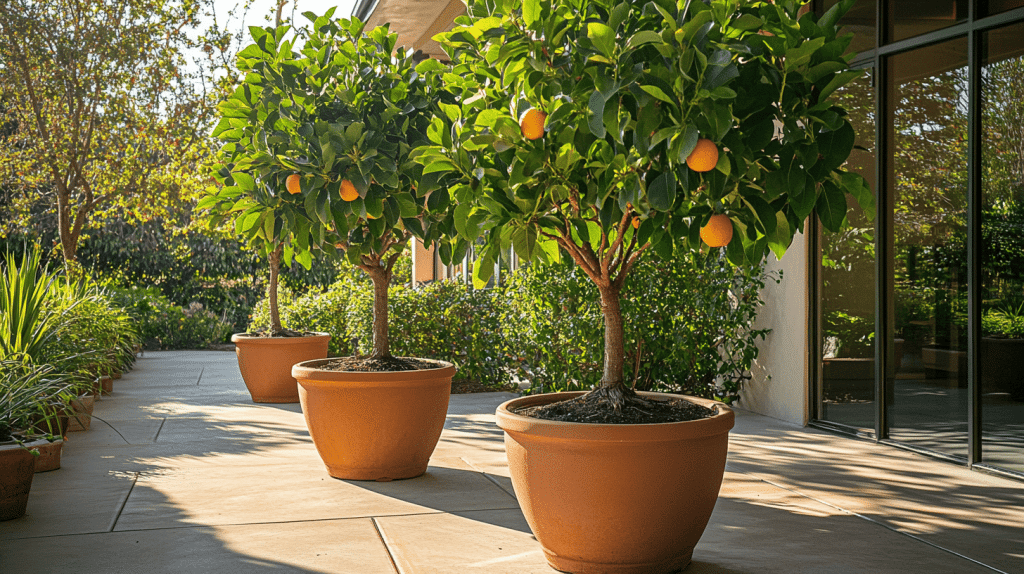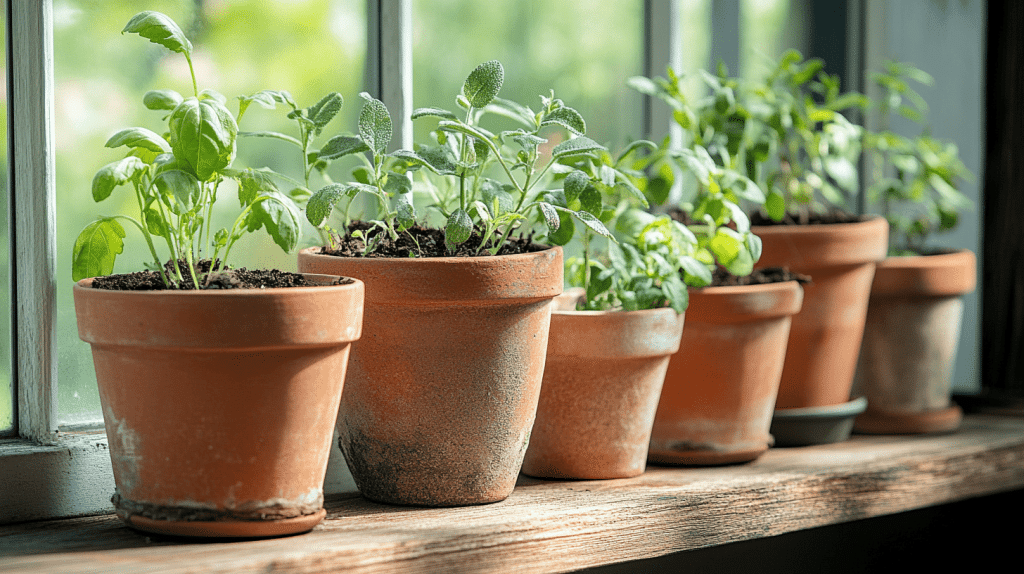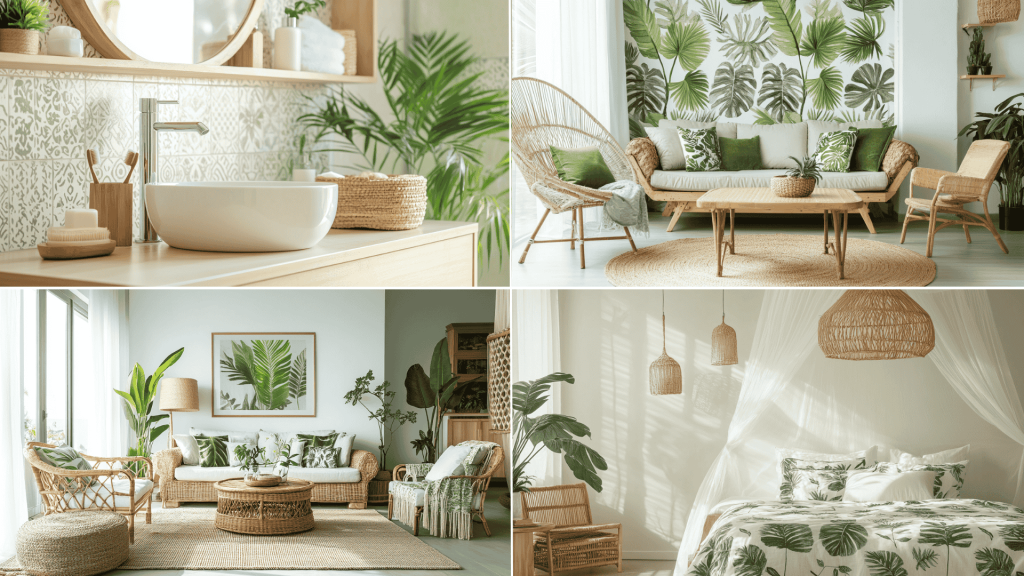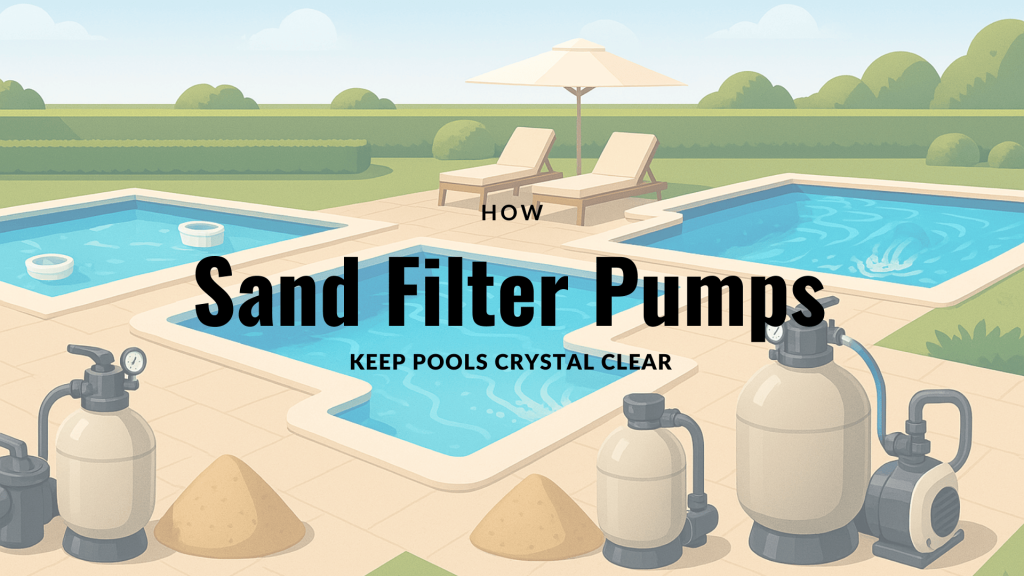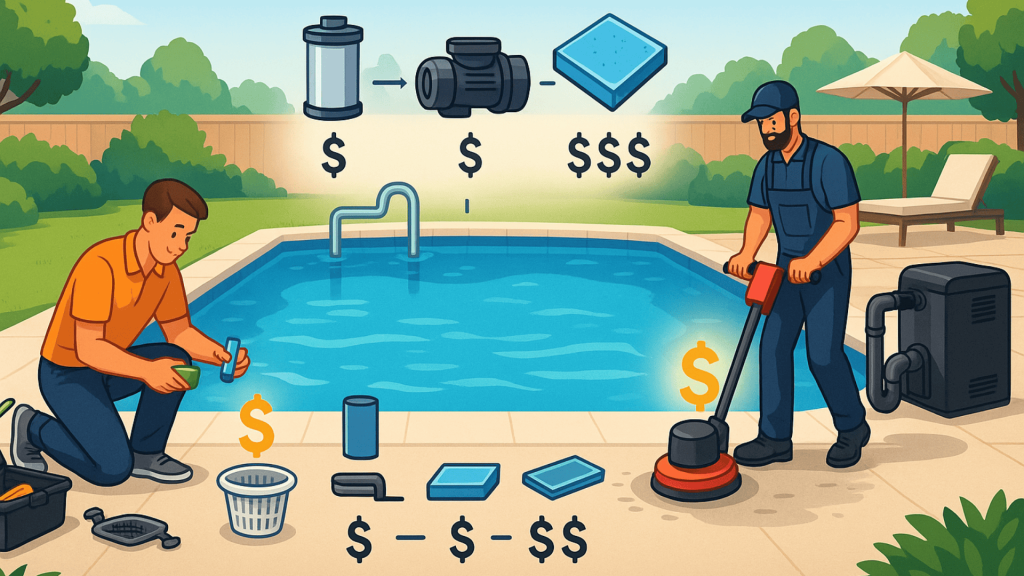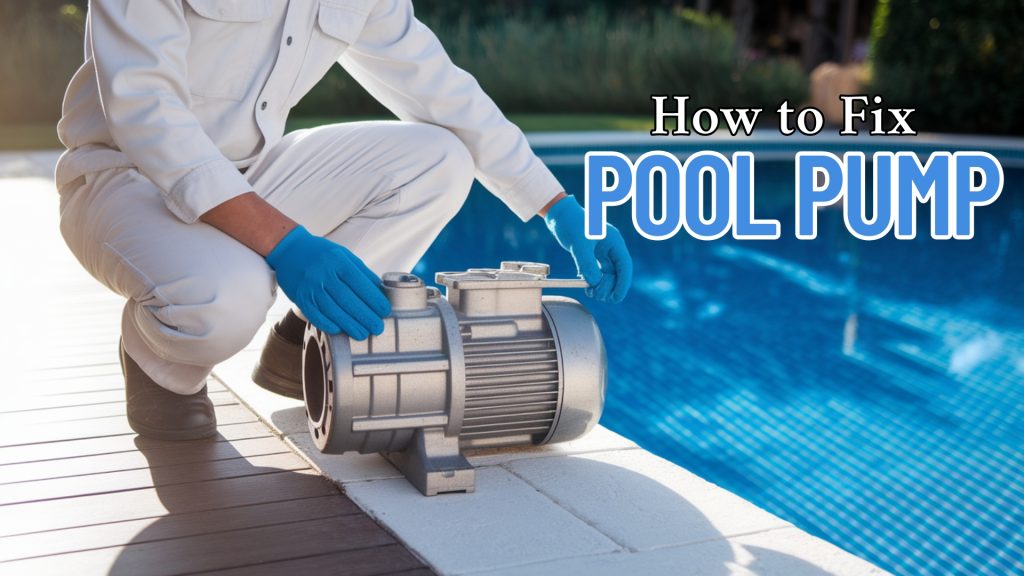Choosing the right pot matters more than you think.
This blog will help you avoid common mistakes and keep your plants healthy.
Many people choose pots that are either too big, too small, or lack drainage.
These issues can lead to root rot, slow growth, or even the death of the plant.
If you’re growing herbs, houseplants, or small trees, the right container makes all the difference.
Let’s keep your plants growing strong.
Why the Right Container Size Matters
Container size affects how well your plant grows.
If the pot is too small, roots get cramped. They can’t spread or take in enough water and nutrients.
This slows growth and weakens the plant.
A pot that’s too big holds too much water, which can cause root rot.
The right size allows roots to remain healthy and allows the plant to grow strong.
It also supports good balance, so the plant doesn’t tip over.
Drainage is just as important. Without it, water sits in the soil and blocks air from reaching the roots.
Healthy roots need both air and space to grow well.
Understanding Plant Container Dimensions
Understanding container size starts with two main measurements: diameter and depth.
- Diameter is the width of the pot’s opening. It shows how much space roots have to spread sideways.
- Depth refers to the height of the pot, providing roots with room to grow downward. Some plants need deep pots, while others prefer shallow ones.
- Volume, measured in quarts or gallons, indicates the amount of soil the pot can hold.
- More soil means more water and nutrients for your plant. Bigger plants need pots with larger volumes to support healthy root growth.
- Pots come in different shapes, too.
- Round pots are a common choice and suit most plants well.
- Square pots save space and are good for tight spots.
- Deep pots are best for plants with long roots. Shallow pots work well for plants with shallow roots like succulents.
Choosing the right pot size and shape ensures your plant’s roots have enough space to grow healthy and strong.
General Guidelines for Selecting Pot Sizes
Choosing the right pot size helps your plant grow strong and stay healthy.
When repotting, it’s best to select a pot that’s 1 to 2 inches wider in diameter than the current one.
This gives the roots room to grow without giving them too much extra space, which can lead to overwatering or root issues.
For large floor plants, you can increase the diameter by 2 to 4 inches if the plant has filled out its current pot completely.
For smaller plants, such as herbs or succulents, even a 1-inch increase can make a significant difference.
Make sure the pot has drainage holes, and avoid placing a small plant in a pot that’s too large. A snug fit is often better than one that’s overly roomy.
Keeping the scale of the pot in line with the size of the plant helps with watering, growth, and overall appearance.
Plant Container Size Chart
Choosing the right container helps plants grow strong and stay healthy.
The table below shows standard pot diameters, their approximate soil volume, and the types of plants best suited for each size.
| POT DIAMETER | VOLUME | IDEAL FOR |
|---|---|---|
| 3–4 inches | 0.2–0.5 quarts | Seedlings, succulents, small herbs (e.g., thyme) |
| 5–6 inches | 1–1.5 quarts | Small houseplants, herbs, and African violets |
| 7–8 inches | 2–3 quarts | Small ferns, bushy herbs (e.g. basil), pothos |
| 10–12 inches | 1–2 gallons | Medium houseplants, tomatoes, and peppers |
| 14–16 inches | 3–5 gallons | Shrubs, small citrus trees, and larger vegetables |
| 18–24 inches | 7–15 gallons | Small trees, large tropicals, container gardens |
| 24+ inches | 20+ gallons | Fruit trees, palms, or multiple plant arrangements |
Knowing these dimensions helps you pick the right pot. It makes sure your plant has enough room to grow strong and healthy.
Choosing the Right Pot Size for Each Plant Type
Different plants have different needs when it comes to container size. Choosing the right pot helps them grow stronger and stay healthy.
Houseplants
like pothos, snake plant, or peace lily usually do well in six to ten inch pots.
These give their roots enough room without holding too much water.
Larger plants like fiddle leaf fig or monstera need bigger pots, usually twelve to sixteen inches wide.
This keeps them stable and supports tall growth.
Herbs and vegetables
These also need the right fit.
Small herbs like basil, thyme, or parsley grow well in six to eight inch pots.
Leafy greens like lettuce or spinach need about eight to ten inches.
Tomatoes, peppers, and similar crops need a lot more room. Use a twelve inch pot or larger so their roots can spread.
Succulents and cacti
They need shallow pots with great drainage.
Four to six inch pots work for most types.
Their roots are short and prefer dry soil.
Fruit trees and large plants
They need the most space.
You should use containers that are eighteen to twenty four inches wide or hold at least ten gallons of soil.
These give roots room to grow and keep the plant from tipping.
The right pot size keeps your plant healthy, stable, and growing strong.
Picking the best for your pot size supports strong roots and steady plant growth.
Pot Material and Design Considerations
Choosing the right pot material affects how your plant grows and stays healthy.
- Terracotta pots are popular because they let air and water pass through the walls. This helps prevent overwatering but can dry out soil faster.
- Plastic pots are lightweight, hold moisture well, and are less likely to break. They are good for indoor plants or places where you want to keep soil moist.
- Ceramic pots often come with a glaze that holds moisture like plastic pots. They look nice but can be heavy and break easily.
- Fabric pots are breathable and let roots get air, helping plants grow strong. They also drain well but dry out faster than plastic or ceramic.
- Drainage holes are very important in any pot. They allow extra water to escape. Without drainage, water can build up and cause root rot. Always check for drainage holes or add some if needed.
- For outdoor plants, use pots that handle weather well, like plastic or terracotta. Indoors, plastic or ceramic pots work well and look good on shelves or tables.
Choose a pot that fits your plant and keep it at the right place for it’s better health and growth. Choosing the right pot material goes a long way just like the pot size.
Simple Repotting Tips for Healthier Plants
Repotting gives your plant fresh soil, more space, and a better chance to grow strong. It may seem tricky, but with a few simple steps, you can help your plant thrive.
- One clear sign your plant needs a bigger pot is roots growing out of the drainage holes or appearing on the surface.
- Other signs include slow growth, dry soil that drains too quickly, or a plant that feels too top-heavy.
- If the plant looks too large for its current container, it’s time to size up.
- When choosing a new pot, go 1 to 2 inches wider for small plants, or 2 to 4 inches wider for larger ones.
- Avoid going too big too fast, as too much soil can hold water and cause root rot.
- Always refresh the soil during repotting. Old soil becomes compact and loses nutrients.
- Gently remove old soil from the roots and replace it with fresh potting mix to give your plant a healthy boost.
- Repotting in spring or early summer is best. With the right care, your plant will adjust quickly and grow even stronger.
Repotting may be simple, but it makes a big difference. Fresh soil and the right-sized pot help your plant stay healthy and happy.
Healthy Plants Start With The Right Pot Size
Choosing the right pot size is one of the best things you can do for your plant.
A pot that fits well gives roots space to grow, holds the right amount of water, and keeps your plant stable.
Too small, and the roots get cramped while too big, and the soil stays too wet.
Matching the pot to the plant’s needs helps avoid problems like root rot or slow growth.
Check your plants often for signs they need repotting.
A little care goes a long way. Use fresh soil, choose the right size pot, and repot at the right time.
These simple steps will help your plants stay healthy, grow strong, and thrive for years to come.
Frequently Asked Questions
What Happens if a Pot is Too Small?
Roots get crowded, limiting water and nutrients, which can slow growth and harm the plant.
Can I Use a Pot without Drainage Holes?
It is not ideal. Use a pot with holes or add drainage material to prevent water buildup.
How Often Should I Repot Plants?
Usually every one to two years or when roots start growing out of the pot.
How Much Bigger Should the New Pot be?
Choose a pot 1 to 2 inches wider for small plants and 2 to 4 inches for larger plants.
Does Pot Shape Affect Plant Growth?
Yes, deep pots suit plants with long roots, while shallow pots work best for shallow-rooted plants.

